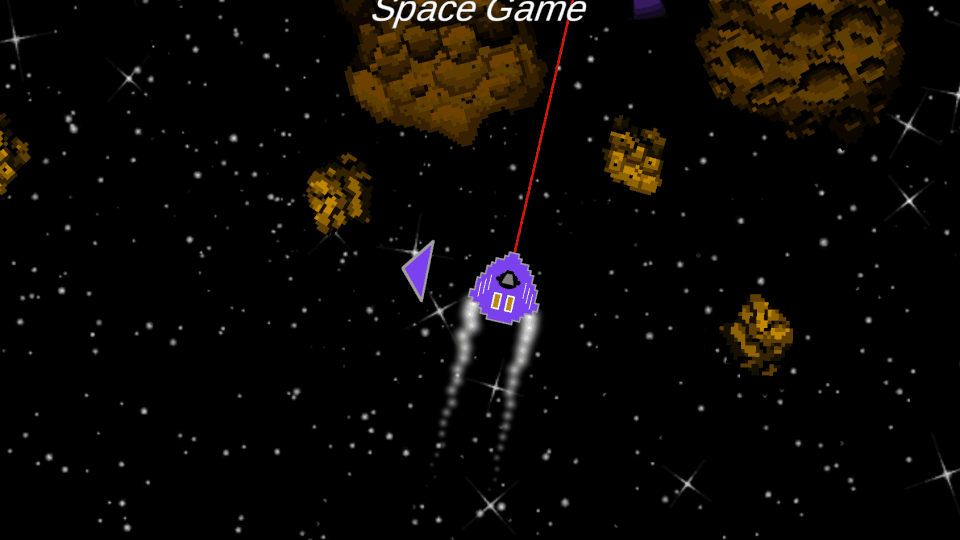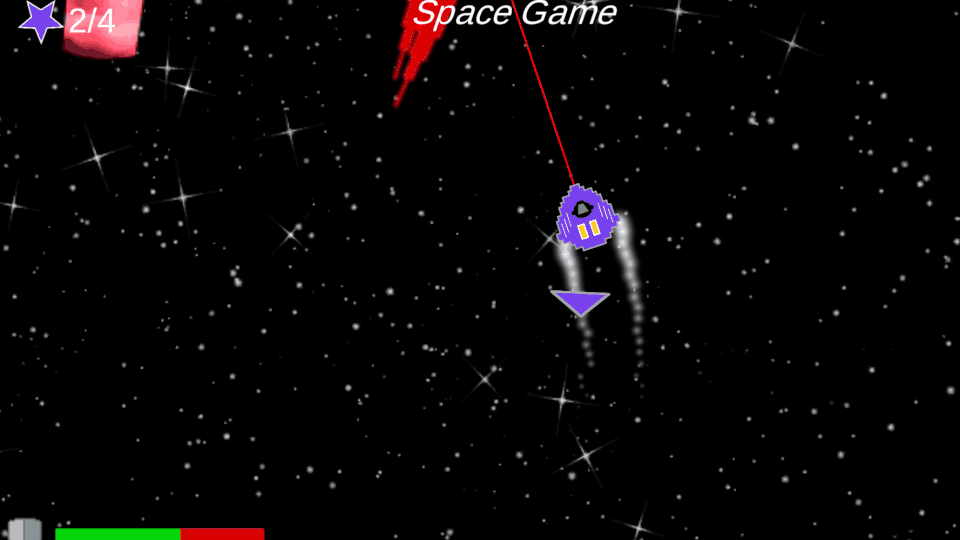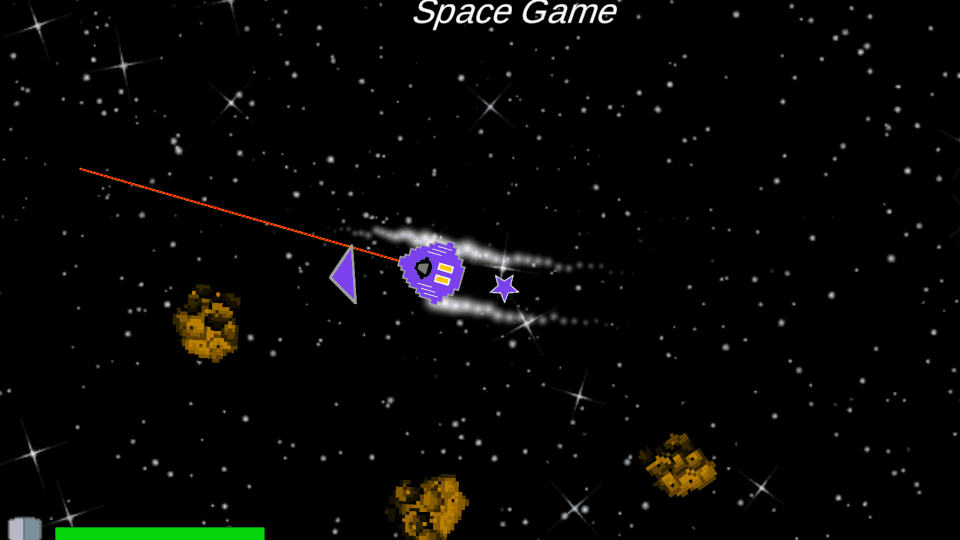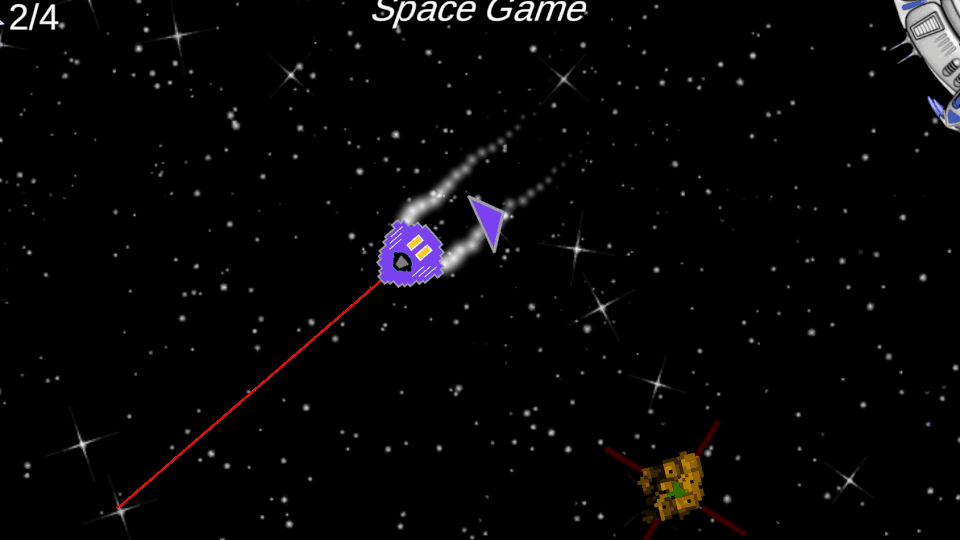"Space Game"
Background
I originally built "Space Game" with a team during a Prime Gaming hackathon in October 2022. The stated goal of the hackathon was to make software to improve Prime Gaming as a whole, but it sort of turned into a game jam as one of the prompts encouraged making a casual web game similar to Wordle. I of course needed no further excuse to get paid to make a game for a week!
After we were randomly sorted into teams, I pitched the idea of a "Game Mode" dropdown on the PG website that could turn the entire website into one of a selection of mini games, similar to the famous Google Doodles or the old Homestar Runner games menu. As a first mini game option, I pitched a side scroller game where players control a spaceship "hunting for deals" physically floating in space, all while dodging asteroids (which they could push with a sort of "impulse beam"), worm-like aliens, and pirates trying to steal the deals.
The team agreed to work on this idea, and to use the Unity Engine to make a web game. We went with a classic arcade, pixelated look, though some of the free images we found were higher-resolution. There were four of us, but all of us were programmers, which posed a unique challenge compared to game jam teams that I had joined before. Moreover, one team member was on-call and not able to devote much attention to the hackathon, while the other two were inexperienced with Unity and gamedev in general. Thus, they mainly found free assets to use for the sprites and sound effects, or made sprites with Pixilart, while I did almost all of the gameplay programming and Unity scene setup!
I was super pleased with how well the game came together by applying best practices like event-driven programming, dependency injection, data-driven design, etc.—particularly the game's floating head enemies, which I put together in the last 24 hours! The following summer, I adapted the game for a talk at GDEX 2023: Live Demo: Building an Interactive Enemy.
Technical Details
I am proud of several of my technical/design decisions while building this game:
-
The nondiegetic UI as a whole is minimal but effective, using as little text as possible:
- The opening "tutorial" UI shows which buttons control which movements with icons only.
- The health bar is just a "shield" icon next a green bar that decreases to red when the player is damaged.
- A "counter" in the top left gives the player a sense of progress toward collecting all 4 treasures, but only appears after the first treasure is collected.
- A little purple "waypoint" spins around the player like a compass needle, always pointing back at the space station where treasure is collected.
- When a treasure is collected, it floats along behind the player until returned.
-
Several gameplay systems are satisfactorily "juicy":
- When damaged, the spaceship flashes red and the health bar flashes white.
- Sounds are emitted when the spaceship retro rockets are activated,when the ship collides with anything, when treasure is collected or returned, and when the "monster" roars or shoots its lasers.
- The impulse beam has a little red "laser pointer". When it crosses an asteroid in range, a spinning red reticule appears over the asteroid.
- Asteroids collide with other asteroids, and their relative masses make the collisions feel realistic.
- "Sparkles" are emitted when the player collects or returns treasure.
- The monsters' laser bolts make little explosions when they impact other physical objects.
- The level design features several unique "zones" to provide variety and a sense of progression. These zones are connected by "trails" of asteroids so players don't get lost in space (the space station waypoint also helps with this). The entire level is surrounded by a circular "wall" of large asteroids, so neither the player nor asteroids or monster laser bolts can fly off to infinity (or beyond).
-
The asteroid "zones" can be visited in any order, but the "intended" progression, for increasing difficulty, is:
- The zone closest to the space station, connected by the first trail of asteroids that the player sees so they are drawn to it first. This zone simply tests players' ability to navigate around asteroids with their ship's unfamiliar controls.
- Another zone connected to the first by an asteroid trail, encouraging players to continue searching there after returning the first treasure. This zone requires players to use the impulse beam to push asteroids out of the way of the treasure.
- A third zone is hidden within a thick wall of large asteroids that the player must navigate around, pushing many smaller asteroids out of the way as they go.
- The final zone requires the most precision: pushing a small asteroid into a medium asteroid to unblock an opening between large asteroids.
- The player's movements feel unique but grounded in reality, using "retro rockets" on the spaceship (indicated by 4 little particle emitters at the corners) to apply 2D physics forces that move/rotate it. Using physics to move the player also made bumping into asteroids and enemies much easier to set up.
- The monsters only spawn after two treasures have been collected, so players have time to adjust to the controls before enemies spawn.
- All significant entities within the game (the player, space stations, treasure, monsters, asteroid zones, etc.) were encapsulated in Unity prefabs. This made viewing diffs in version control easier, reduced the setup to create new "instances" of those entities, lent itself to procedural spawning (for the monsters/lasers), etc.
-
Finally, the game's "monsters" were the most sophisticated NPCs I had yet built, which is ultimately what inspired the aforementioned GDEX talk.
Their design came from an emoji in the PG Slack workspace tagged
:hyper-bezos:that was basically an image of Jeff Bezos laughing with glowing red eyes. Using it was an inside joke for the hackathon. I animated the image's mouth, got it to shoot lasers out of its eyes on a timer that were always pointed at the player and could collide with asteroids, and gave it AI to chase the player at a distance within a region of the map defined by a 2DMeshCollider, returning to one of several "guard points" in that region when the player exited it to give the impression of the monster "retreating" ominously back into space. I did not have time to implement an object pool for the laser bolts, but that would've been my next optimization.





